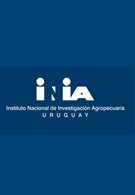ABSTRACT.- The entomopathogenic fungus Beauveria bassiana is widely used as a biocontrol agent, but its efficacy varies depending on the target insect species. Piezodorus guildinii, a major soybean pest, exhibits low susceptibility to B. bassiana. Thus, biocontrol of this pest requires improving virulence of B. bassiana. Here, we used genomic and transcriptomic analyses to identify novel genes associated with the enhanced virulence of B. bassiana strain ILB308 when exposed to the insect epicuticular hydrocarbon n-pentadecane. Comparative analysis with the lower-virulence strain ILB205 revealed differentially expressed genes (DEGs) linked to genetic information process pathways and immune evasion. Among these DEGs, we identified BbCBM_1, a secreted carbohydrate-binding protein, as a candidate virulence factor. Overexpression of BbCBM9_1 in ILB205 led to enhanced virulence against P. guildinii and Tenebrio molitor, as well as improved conidial germination, tolerance to oxidative and cell wall stress, and increased growth in nutrient-rich and glycerol-supplemented media. This demonstrates that the enhanced virulence observed in ILB308 grown on n-pentadecane can be replicated by overexpressing an associated gene in a low-virulence strain. Our study, highlights the potential of integrating transcriptomics and targeted genetic modifications to optimize fungal biocontrol agents for improved pest management.

